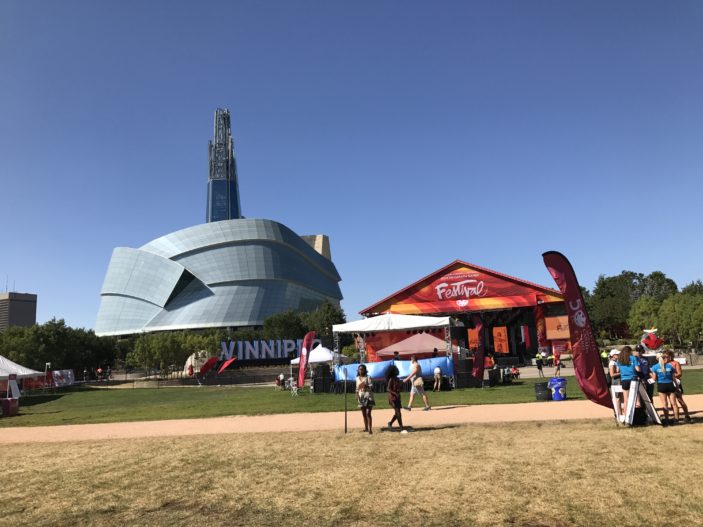
Winnipeg is the capital and largest city in the Canadian Provence of Manitoba, and is known as the “Gateway to the West” thanks in part to its location on the country’s rail network; sitting almost exactly halfway between Toronto and Vancouver on the itinerary of the iconic train experience that is “The Canadian”.
Recently I spent a couple of days in the city, after taking the almost two day train journey from Toronto to Winnipeg, and was greeted by a vibrant destination full of history, great food, arts and a few animals to enjoy along the way.
Here’s five things you need to do when you’re passing through Winnipeg:
See the polar bears swim and the buffalo roam…
There’s a couple of animals you’ve got to check out while you’re in Winnipeg, and two places where you can do that.
Winnipeg’s 80 acre Assiniboine Park Zoo has been sitting in the west end of Assiniboine Park (the city’s largest) for almost 100 years (since 1904). Its polar bears have long been its main attractions, particularly since the enclosure was upgraded in the 60s. And in 2014 they replaced this with the 10 acre “Journey to Churchill”, which “is the most comprehensive zoological exhibit of its kind in the world”.
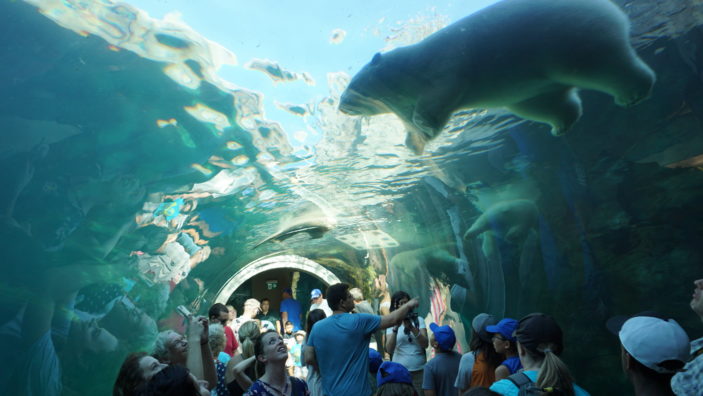
Guided tours are available, and alongside the polar bears, who you can watch swim all around you (which is unquestionably cool), you’ll spot a number of other northern species such as polar bears, Arctic fox, snowy owl and muskox.
More northern species can be found at FortWhyte Alive in south Winnipeg, where you can enjoy a guided bison safari; a chance to get up close (from a safe distance, in a large bus) with North America’s largest land mammal.
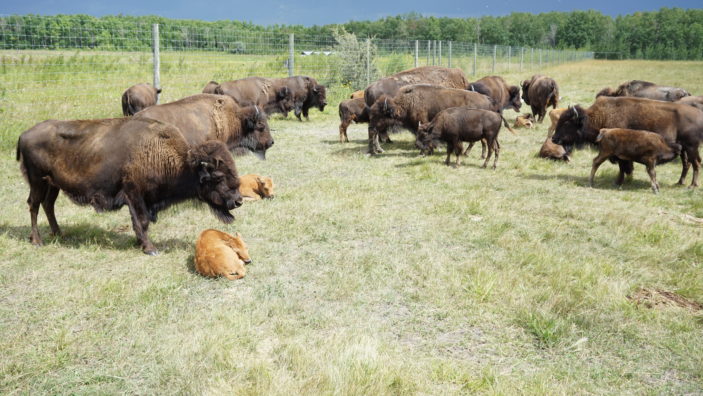
Tours run for an hour and cost under $20, and you’ll get to see the 30+ bison, young and old, that live on their pasture land.
Visit The Forks
Where the Red River and the Assiniboine River in Downtown Winnipeg, you’ll find a green space known as The Forks, a National Historic Site of Canada and home to a number of events throughout the year.
While I was in town, in August earlier this year, the Canada Summer Games were taking place, and there was a daily, free music festival to accompany it on the 14-acre grounds, with nightly fireworks to boot. The Festival Stage is regularly used for live music events.
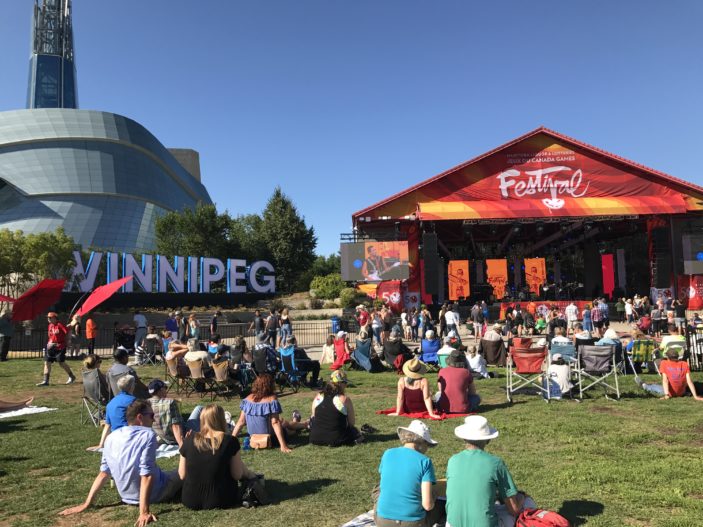
Depending on the time of year – as sometimes it’s submerged and inaccessible – you can take a walk along the Assiniboine Riverwalk, and in wintertime The Forks are turns into the Arctic Glacier Winter Park, home to the longest skating rink in the world.
More details about the events that are held in the park can be found HERE.
Nearby, you’ll find The Forks Market, featuring two floors and a recently renovated food hall now known as “The Common”, and there’s more shopping in the Johnston Terminal. The Manitoba Theatre for Young People is also located in the area, as is the Winnipeg Rail Museum and the Manitoba Children’s Museum. The Winnipeg Art Gallery is also nearby.
But the centerpiece of the area is the Canadian Museum for Human Rights, which opened in 2014. The beautiful building from architects Antoine Predock and Chris Beccone is among the most impressive Human Rights museums in the world, both in respect of its design and content.
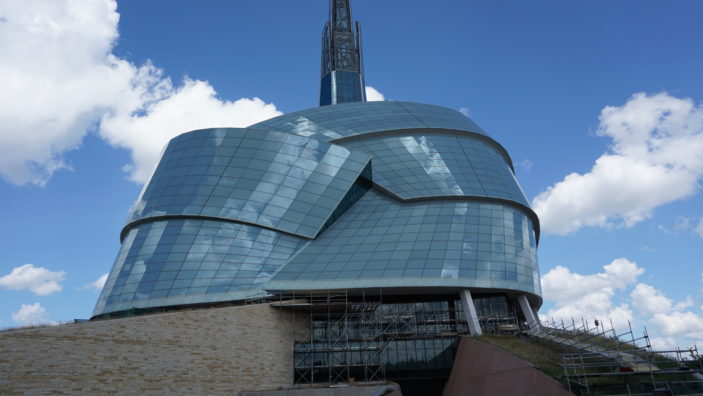
Every aspect of the building is a visual delight – and well considered practically for the way you move up the building – eventually going right up to the peak. The displays and exhibits enjoy a similar attention to detail.
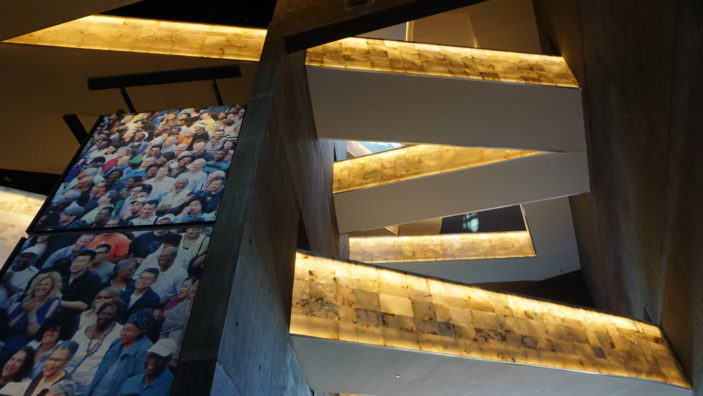
There are ten permanent galleries in the museum, that tackle human rights on a micro Canadian and macro Global label. There are exhibitions on “Protecting Rights in Canada”, “Canadian Journeys” and “Indigenous Perspectives”, which includes a focus on missing and murdered Indigenous women, among many others.
“Trace”, a 2-1/2-storey “ceramic blanket” commissioned by the CMHR, serves as a centrepiece to the building, and part of a series by Rebecca Belmore’ that “expose the traumatic history and ongoing violence against Aboriginal people.” (Curator Lee-Ann Martin). The galleries on genocide the holocaust are particularly striking, looking not just at what happened, but why it happened. And let’s just say some of the similarities with current leaders is certainly troubling.
Among the finest museums I’ve ever been to, anywhere in the world.
Visit the Saint Boniface Cathedral
One of the more unique experiences in Winnipeg, from both a historical and and architectural point of view, can be found at the Saint Boniface Cathedral. Or what’s left of it.
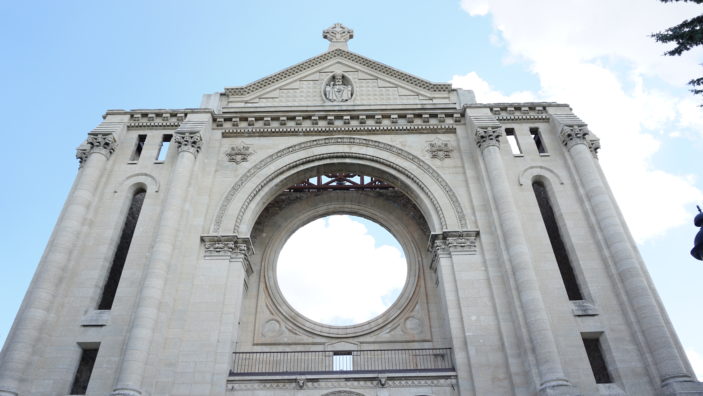
Sitting in the centre of the city, at 190 avenue de la Cathédrale, Saint Boniface, the striking remnants of a stone cathedral sit inside these beautiful parklands. The Cathedral was built in 1906, but destroyed in a fire in 1968, leaving only part of the façade – sans windows.
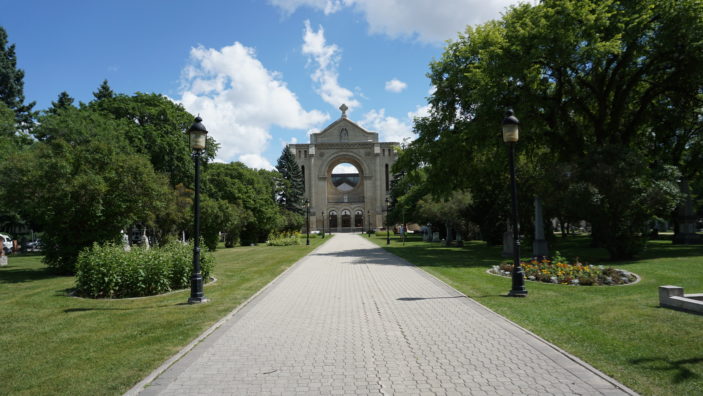
Rather than tear down what remained, architects Étienne Gaboury and Denis Lussier designed a new building to sit behind it, utilising what was left of the original 1906 back wall.
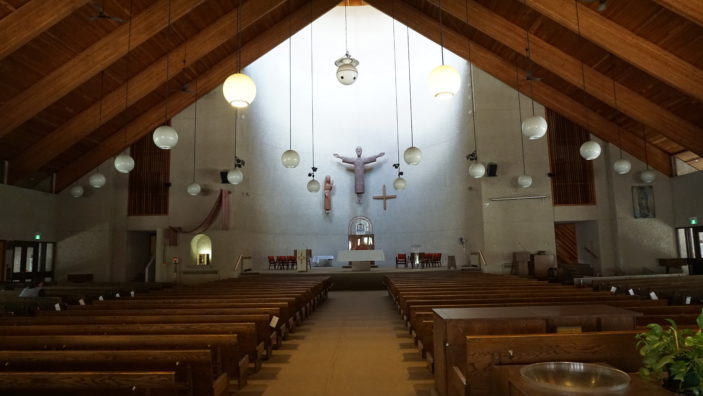
The result is a beautiful blend of classic and modern design, that makes it among the most unique – not to mention picturesque – modern religious sites in the world.
Explore the Exchange District
If you want to enjoy the creative side of Winnipeg, look no further than the Exchange District, a 30-block district named after the area’s grain exchange, which was in operation from 1880 to 1913. It’s been a National Historic Site of Canada since 1997.
There’s plenty to enjoy architecturally, with the area boasting 62 of the city’s 86 heritage structures, and North America’s most extensive collection of early 20th-century terracotta and cut stone architecture.
You’ll find a variety of businesses operating in the Exchange District, mostly creative spaces. And on the first Friday of every month, members of the public are invited to tour private artists’ studios, art galleries and artist run centres and are encouraged to support Exchange shops and restaurants. The initiative is event is called “First Fridays Winnipeg” and you can find more details about it HERE.
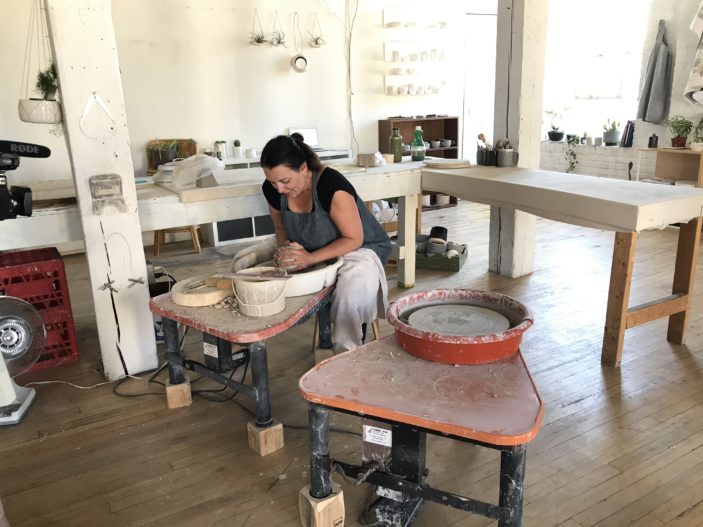
While we explored the District, we came across Mud + Stone Studio, and witnessed artisans producing beautiful pottery, in large warehouse spaces that also featured small craft stores and art galleries.
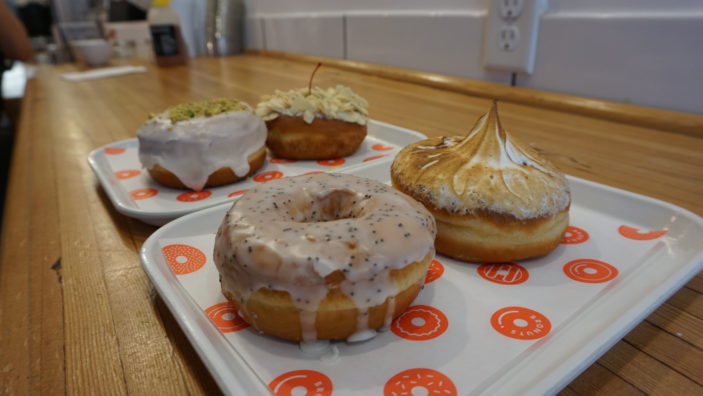
If you’re looking for a great breakfast, I highly recommend the Eggs Benedict from Clementine (123 Princess St, Winnipeg, MB R3B 1K8). One of the best meals I had in Winnipeg was in the District at Deer + Almond (85 Princess St, Winnipeg, MB R3B 1K4), which has a concise menu and one of the best chicken burgers I’ve enjoyed in some time, the “Chicken Fried Chicken” with zucchini pickles, accompanied by a very local beer from Half Pints – the St James Pale Ale.
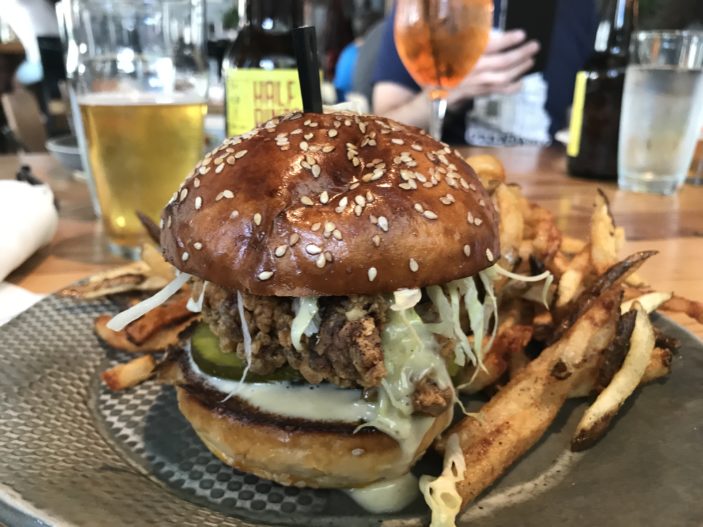
In the surrounds of the Exchange District, you can also explore the variety of breweries the city has to offer, including Half Pints. Winnipeg Tasting Tours is a great way to enjoy a number of locations in the area, starting at the Peg Beer Co., before enjoying a beer, pizza and brewery tour and stops at a number of locations, which may include Half Pints, Little Brown Jug, Torque Brewing, Brazen Hall or One Great City Brewing Co.
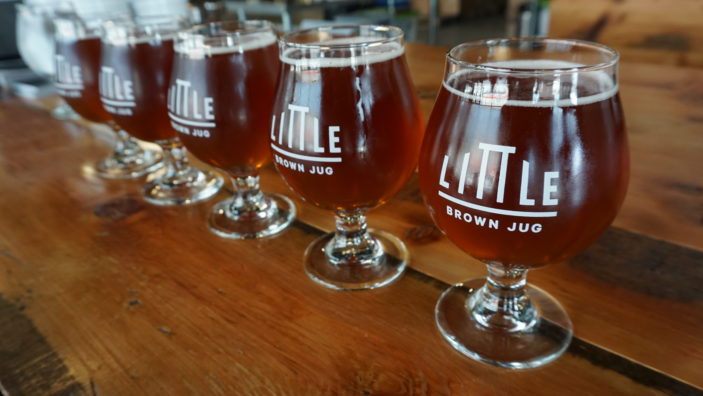
Little Brown Jug was one of my favourite spots on the tour, though I was impressed across the experience for both the variety and quality of craft beers on offer. After the four stops across four hours, I left incredibly full and perhaps a little bit intoxicated.
Catch some live entertainment
And finally, let’s talk about the music. While the Canada Summer Games in The Forks was a one off event, every year the city hosts iconic, world class events like the Winnipeg International Jazz Festival in June, the Winnipeg Folk Festival in July, and the Manitoba Electronic Music Exhibition (MEME) in August. They even have a winter festival in February, Festival du Voyageur, which is held in the city’s French quarter.
If a festival isn’t on while you’re in town, there’s still plenty to do, with a fantastic music and arts scene that runs year round. Some of the city’s best music venues include The Handsome Daughter (61 Sherbrook St, Winnipeg MB), The Good Will Social Club (625 Portage Avenue, Winnipeg MB), The Park Theatre (698 Osborne Street, Winnipeg MB) and the West End Cultural Centre (586 Ellice Avenue, Winnipeg MB).
Getting to Winnipeg from Australia
There are regular flights to Winnipeg from most major cities in Canada, including Vancouver – from where you can connect direct to Australia. You can also get to Winnipeg by train, on the iconic Canadian Rail line. It’s roughly halfway between the two ends of Vancouver to Toronto route, which takes about 2 days from either direction. You can find train schedules on the VIA Rail website.
While in Winnipeg, we stayed at the beautiful MERE Hotel (333 Waterfront Drive Winnipeg MB R3B 0V1). For more details head HERE.
The author was a guest of Tourism Winnipeg.
